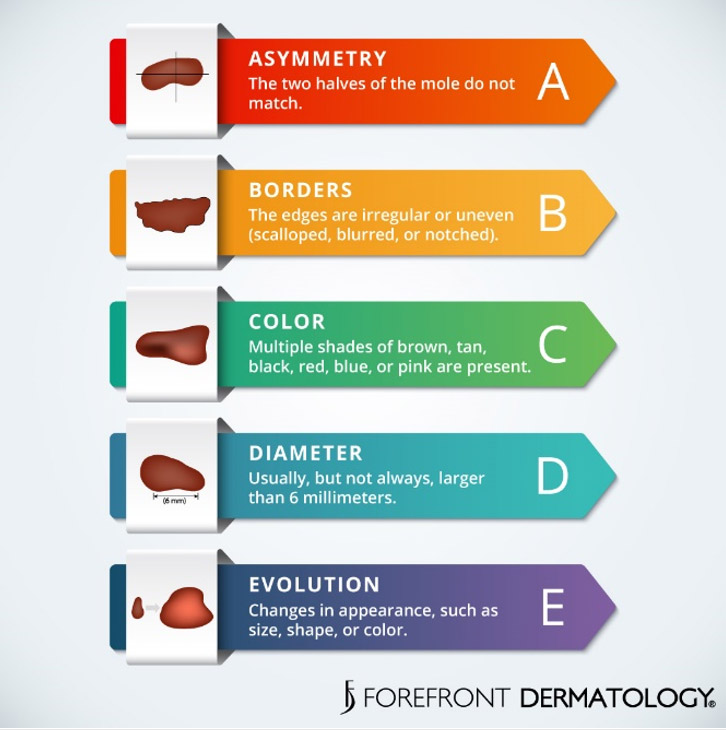
Understanding what melanoma is and the warning signs, risks, and types will help you become more self-aware of what to look for. After all, early detection could save your life.
What is Melanoma?
Melanoma is a deadly form of skin cancer because of its ability of metastasize to local lymph nodes and other organs. It is estimated that melanoma kills, on average, over 10,000 people in the United States every year.
How does Melanoma start? Am I at risk for Melanoma?
Everyone is at risk for melanoma, but increase risk is dependent on several factors including UV exposure – including tanning beds – number of moles on the skin, skin type and family history.
• UV Exposure – Blistering sunburns in early childhood increase risk, but sunburns later in life and cumulative sun exposure also increase your chances of developing melanoma. According to the Skin Cancer Foundation, those who use tanning beds increase their chance of melanoma by 75 percent.
• Moles – There are two kinds of moles: normal moles and atypical moles. Atypical moles put you at an increased risk of developing melanoma. It is important to monitor all moles for any changes.
• Skin Type – People with fairer skin are at an increased risk of skin cancer, but this does not eliminate other skin tones from having a risk of skin cancer.
• Family History – Genetics plays a large role in melanoma. About one in every 10 patients diagnosed with the disease has a family member with a history of melanoma. According to the Skin Cancer Foundation, research shows if you have an immediate relative who has melanoma, you are in a melanoma-prone family –with a 50 percent greater chance of developing the disease.
 Warning Signs of Melanoma
Warning Signs of Melanoma
Moles, brown spots and growths on the skin are usually harmless — but not always. According to Dr. Adam Asarch, Board-Certified Dermatologist and Fellowship-Trained Mohs Surgeon with Forefront Dermatology, “Anyone who has more than 50 moles is at greater risk for melanoma. The first signs can appear in one or more atypical moles. That’s why it’s so important to get to know your skin and to recognize any changes in the moles on your body.” Melanoma can occur in a variety of colors including brown, black, red, blue, or purple. These spots can be flat or raised and can bleed easily. It is extremely important to see your local dermatologist and have any worrisome areas professionally examined. Remember, early detection saves lives and a simple office appointment with your Dermatologist can truly mean the difference between life and death.
Be Proactive
Remember, early detection saves lives and a simple, yearly in-office skin screening with your local board-certified Forefront Dermatologist can truly mean the difference between life and death. Find a dermatologist near you and schedule your annual screening today!





